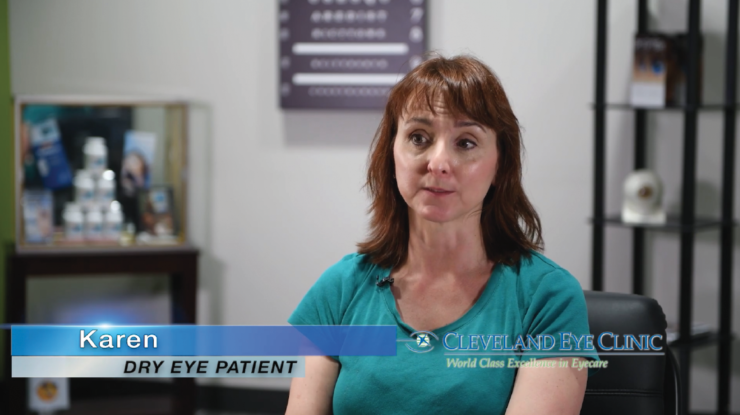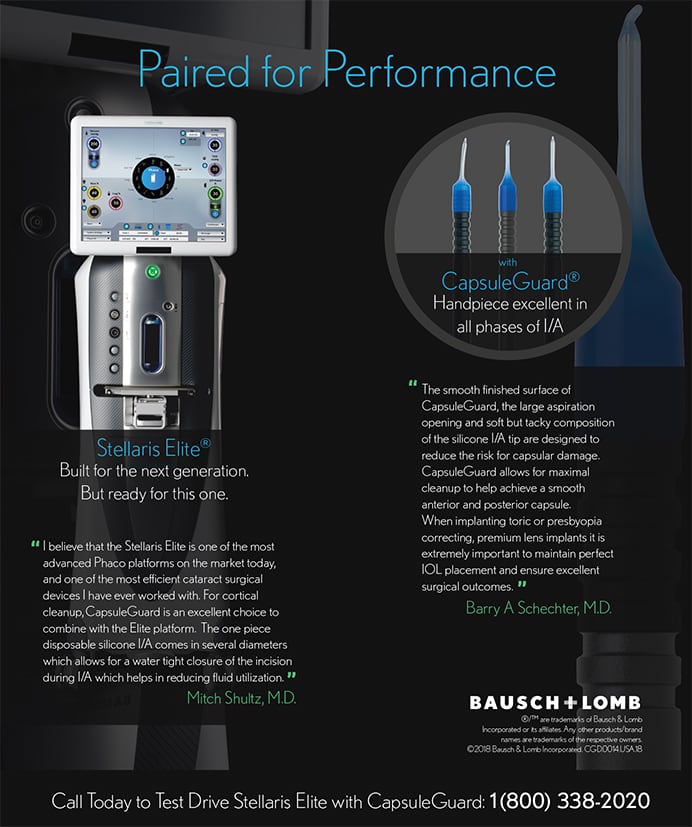Many times in our practices we encounter patients with excellent quantitative postoperative vision complaining of “unstable vision” or “a lack of crispness.” Other patients complain about symptoms of dry eye disease (DED), describing their frustration with statements like “They [their previous doctors] just gave me some eye drops and told me to come back in a year.” How we respond to these patients will determine our level of success in treating DED in our practices.
Hearing such complaints year after year motivated me to try to help these patients by alleviating their symptoms. I observed that the challenge of prescribing or using common medications, treatments, and protocols to treat DED is that these treatments do not take into consideration the unique nature of each person’s condition. By developing custom treatment options, I am able to better meet these individual needs and treat the disease state in the most efficient manner, both improving patient compliance and setting appropriate expectations for improvement.
Customizing Treatments
The Cleveland Eye Clinic’s Dry Eye Center is uniquely positioned in that it can provide a number of different treatments for all types of ocular surface disease, including meibomian gland dysfunction (MGD), aqueous insufficiency, and corneal surface irregularities. Having access to multiple technologies and treatment options helps to facilitate individualized treatment plans.
Owning the diagnostic instrumentation necessary to provide a comprehensive assessment of the ocular surface is also crucial. In my office, an ocular surface evaluation begins with learning the patient’s chief complaint in detail and taking an exhaustive history, listing all treatments attempted in the past, including brands of tears, prescription medications, procedures, and the effectiveness of each previous treatment.
The tear film goes through an extensive evaluation including tear breakup time, identification of inflammatory markers, and osmolarity measurement. We perform imaging of the meibomian glands to detail the structures and provide patient education. I perform a thorough biomicroscopy examination, including tear meniscus evaluation, staining, and meibomian gland expression.
I then review everything with the patient. We discuss the test results and the patient’s symptoms, and together we create a customized treatment plan.
Word of Mouth
In today’s health care environment, valuing efficiency of throughput as an outcome rather than quality of treatment seems to be the norm. Most patients we see with DED complaints have already been to multiple providers and have encountered these types of sterile interactions with enough frequency to welcome our individualized treatment plans.
Once patients began to experience our custom treatments and we had a few success stories, it seemed as though the floodgates were opened. We became well-recognized with local surgeons because of our expertise in treating DED. Patients with DED complaints who previously would have clogged up a surgeon’s schedule, demanding to see the person who performed their surgeries, were now being referred to me for corrective measures to enhance their excellent surgical results.
Additionally, in our office patients with DED are proactively identified prior to surgery with the use of a patient symptom questionnaire.1 Identifying signs and symptoms before surgery redirects DED from being a self-reported postoperative problem that the patient felt “wasn’t there before surgery” to its appropriate place as part of the patient’s overall health condition taken into account preoperatively. In many instances, that classic adage is true: “If it wasn’t identified before surgery, it is the doctor’s problem; if it was identified before surgery, it is the patient’s problem.”
When ocular surface disease is identified preoperatively, our center can also treat it proactively in order to ensure optimal surgical outcomes. Surgeons are much happier with their schedules full of preoperative consultations rather than unhappy 20/20 postoperative patients. Additionally, patients whose DED problems are flagged and treated appropriately preoperatively can be some of the most grateful.
Community Referrals
The same referral pattern that we have established with surgeons and fellow optometrists within our practice has also taken hold with several optometric colleagues in our community. They see my DED services as a way to augment the care that their practices provide—whether for enhancing patients’ vision or improving contact lens tolerance or overall ocular comfort.
An important aspect for these providers is the knowledge that their patients will return, that their patients have been cared for, and that their patients will have received appropriate treatments. Communication is vital with these community providers. After each visit, I send a letter to the provider keeping him or her updated on that patient’s progress. When these providers see the care we provide to their patients and the attention we pay to their offices in scheduling or sending correspondence, it enhances their collaboration with other areas of the Cleveland Eye Clinic.
In addition to receiving many referrals from inside and outside sources, we also expend significant efforts educating our community, which has led to a further influx of patients. I have created video clips based on interviews with several of my patients, and we post these on our website and social media outlets to draw attention to the abilities of the Cleveland Eye Clinic’s Dry Eye Center (Figure). We also participate in community outreach activities and offer dry eye seminars to educate community members about the symptoms of DED. All of this activity serves to increase awareness of the condition and to build confidence in our ability to treat it.
Choose Your Involvement
Patients with DED can be the most challenging and also the most rewarding of patients. Clinicians must determine the level of interaction they want to have with these patients through diagnosis and treatment. For some, participation in care for patients with ocular surface disease may be cursory, treating only the basics and referring more challenging patients to other clinicians. Others may want to develop a center of excellence.
To optometrists who want to participate in more primary eye care, I suggest finding a practice that has a Dry Eye Center of Excellence and working with that center to identify patients who can be served by their treatments. To those who desire more challenge and potentially a greater reward, read what your colleagues say, listen to your patients’ questions and concerns, and start developing custom plans for each one. Success is sure to follow.
- Starr CE, Gupta PK, Farid M, et al; the ASCRS Cornea Clinical Committee. Review/update: an algorithm for the preoperative diagnosis and treatment of ocular surface disorders. J Cataract Refract Surg. 2019;45(5):669-684.







